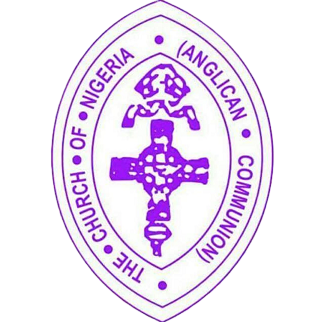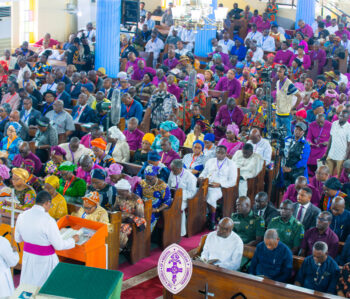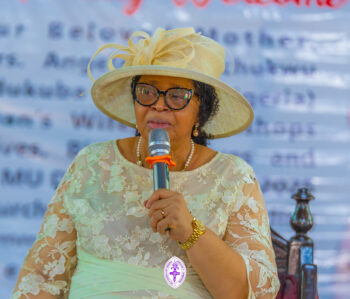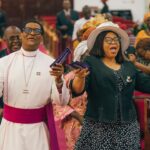- Korede Akintunde
- December 12, 2023
- 0 Comments

THE CHURCH CALENDAR AND LECTIONARY
The lectionary is a complementary tool to the Christian calendar in our spiritual formation and discipleship. Christians live by the secular or Gregorian calendar just as everyone else does. Anglicans also live by another year, another calendar, known as the Church year. While this is generally very similar to the Church year observed by other Western Christians, it is different in some details and some nomenclature.
The Church calendar is a direct inheritance from the Jewish religion in which the keeping of regular commemorations and observances had long been important. The Jewish calendar was a lunar one because, as they were originally nomadic people and traveled by night, they attached great importance to the moon. It is from their calendar that the Christian Church inherited the concept of great festivals of Easter and Pentecost, being fixed according to the moon’s phases. In this regard, they gave new significance to the old feasts. The Passover became Easter while Pentecost commemorated the Coming of the Holy Spirit.
Yet just as vital an influence on the calendar is the fact that the Christian Church grew up in the Roman Empire that followed a calendar controlled by the sun. This divided the year into twelve months and therefore when the Church began to institute festivals which were of unique importance for herself, and not originally Jewish, they were observed on days in the Roman calendar. These include the Saints’ Days, Christmas Day, and Epiphany among others.
The Church Year or Christian Calendar starts with the First Sunday in Advent or Advent I. This falls on the Sunday nearest to November 30 (Feast of St. Andrew). It may fall on November 27
and December 3 as dictated by November 30 of the civil year.
There are no basic seasons in the Anglican Church Year, as well as a considerable number of saints’ days and other special observances. This array is made somewhat confusing by the fact that some of the days of the Christian year fall on fixed dates of the secular calendar while others are “moveable feasts”, falling on dates that vary from year to year, depending upon the date of Christmas (always fixed) and Easter (fixed by the moon). The nine seasons of the Christian (Anglican) year are:
ADVENT – Four Sundays (beginning with Advent I)before Christmas and ending on Christmas Eve (December 24)
CHRISTMASTIDE – Twelve Days Christmas Day till Epiphany Eve – January 5.
EPIPHANYTIDE – Epiphany Day (January 6 till Shrove Tuesday (Eve of Ash Wednesday. These include the three Sundays before Lent – – Septuagesima, Sexagesima, and Quinquagesima Sundays. The number of Sundays between Epiphany and Septuagesima varies, may be as short as two and as long as six.
LENT – From Ash Wednesday to the eve of Palm Sunday. PASSIONTIDE – Palm Sunday to Holy Saturday (Easter Eve) EASTERTIDE – Five weeks starting from Easter Sunday till the fifth
Wednesday after Easter (eve of Ascension Day).
ASCENSIONTIDE – Fifth Thursday after Easter. This is known as the second Holy Thursday, the first being the Maundy Thursday. This season ends on Saturday before Pentecost Sunday
WHITSUNTIDE – Starts on the Day of Pentecost till that week Saturday.
TRINITYTIDE: – Trinity Sunday through all weeks ending on the eve of next Advent. The number of weeks varies between twenty-two and twenty – six weeks.
The dates of all of these seasons vary from year to year, except for Christmastide, which of course begins on December 25th, and Epiphany tide, which begins on January 6th. In addition, there are thirty-three special holy days of observance specified in the Church of Nigeria Book of Common Prayer which occur regularly on fixed dates but are not directly associated with the above-named seasons. These are “Holy and Saints’ Days. In addition there are some other days. There are other days and special Sundays
Different liturgical traditions are observed at slightly different times, but those listed above are the primary seasons in the Church year. While all Christians usually celebrate certain holidays (like Christmas and Easter), some churches (usually those that are more liturgical) use the calendar to guide their services every week as expressed in the Lectionary. The Book of Common Prayer, a famous ancient prayer book, contains daily prayer and Scripture reading (as well as Scripture guides for Sunday worship) based on the Church calendar.
The church year traditional, is divided into two. First, Advent to Pentecost is the period that is crowded with and characteristically celebrates all the events of Birth, Ministry, Suffering, Death, Resurrection and Ascension of our Lord Jesus Christ. Second, the whole of Trinitytide (about five months) is regarded as Ordinary Season. Only three events that related to the Lord are noted here, The feast Corpus Christi – Thursday after Trinity Sunday (only popular among the Anglo-Catholics) the Feast of Transfiguration (August 6), and the Feast of the Holy Cross (September 14)
LIST OF HOLY AND SAINTS’ DAYS IN LIST FOR OBSERVATION BY THE CHURCH OF NIGERIA ANGLICAN COMMUNION
St. Andrew the Apostle -. November 30 St Stephen the Martyr. – December 26 St John the Apostle. – December 27 The Holy Innocents – December 28
St Paul the Apostle – January 25 St Timothy & Titus – January 26
Presentation of Jesus Christ & Purification of Mary in the Temple – February 2
St Matthias and Inauguration of the Church of Nigeria Anglican
Communion. – February 24
St Joseph of Nazareth – March 19 Annunciation to Mary – March 25 St Mark April 25
St Philip and James the Less the Apostles – May 1 The Visit of Blessed Mary to Elizabeth – May 31
St Barnabas – June 11
St John the Baptist – June 24 St Peter the Apostle June 30 St Thomas the Apostle July 3 St Mary Magdalene – July 22
St James the Great the Apostle – July 25 Feast of Transfiguration is- August 6
St Bartholomew the Apostle – August 24 Nativity of Blessed Mary – September 8 Holy Cross Day – September 14
St Matthew the Apostle – September 21 St Michael and All Angels – September 29
Remembrance of Samuel Ajayi Crowther – October 3 St Luke the Evangelist – October 18
St James the Lord’s Brother – October 23 St Simeon and Jude – October 28
All Saints’ Day – November 1 All Souls’ Day – November 2
LITURGY
The liturgy is the order of worship (the things that happen and the order they happen) in a church service. When a church is more liturgical, it means they have a specific order of worship and elements that they traditionally use. Liturgy is a form of public religious worship within the different denominations of Christianity. During this public worship, colors are worn to signify different feelings and times of year. Color symbolism is one of the church’s pre-Reformation heritage just like music.
LITURGICAL COLOURS
Liturgical colors are specific colors used for vestments and hangings within the context of Christian liturgy. The symbolism of the colors of violet, blue, white, green, red, gold, black, and rose among others may serve to underline moods appropriate to a season of the liturgical year or may highlight a special occasion. Colors play an important part in the worship of the Church. They
change according to the seasons of the Church year. Colors are a primary source of symbolism, and as such tell us much about what we believe about the lessons we hear during the Liturgy of the Word (which are themed according to the seasons), and about what we do during worship.
There are five basic liturgical colors, Purple, White, Green, Red, and Black. Others that are permissible as alternatives are gold (for White) Blue (for Purple) Pink Rose for specific Sundays during the Purple seasons,
PURPLE: Purple (or violet) is the color for Advent and Lent Seasons. It is a symbol of penitence. The spiritual meaning of purple symbolizes royalty, nobility, luxury, power, and ambition. It is often used to symbolize creativity, femininity, and spirituality. In some cases, purple is used to symbolize wealth and extravagance. It is also sometimes associated with peace and pride. Apart from seasonal use, it is now being used at burial services. The color reminds us of the violet flower that bows its head and is a symbol of humility. Lent is the season of prayer, fasting, and almsgiving. It is a quiet season of reflection. The colour of Advent is more of a rose-purple, like a sky just before sunrise. This is the time of year when the Church waits in joyful hope to celebrate the birth of Jesus Christ, the light of the world.
BLUE In some Dioceses, an alternative color to Purple is Blue. Blue is the color of spirituality, intuition, inspiration, and inner peace. It is also associated with sadness and depression (the “blues”). Though blue comes in a seemingly infinite variety of hues, all shades of blue are generally regarded to represent feelings of peacefulness, trust, loyalty, and sadness. This incredibly complex color is especially fascinating because it evokes different and often contradictory responses from people depending on their relationship with it.
ROSE: (PINK): Used on Advent III [also known as Guadete Sunday]
and Lent IV [also known as Laetare Sunday], On both of these days, the Entrance Antiphon calls us to rejoice, so the pink vestments mark a softening of the penitential tone of the season. Pink Rose colour is used instead of Purple. The meaning of pink roses is gratitude and admiration. They’re the perfect choice for the people you appreciate most, like your friends, siblings or teachers. Pink roses can also represent femininity and elegance, which makes them perfect for events like engagement parties, proms and baby showers for a baby girl
WHITE:- The color white is used during the Christmas season (Christmas Day to Epiphany – December 25 – January 6), Eastertide and Ascensiontide. Spiritually, white is light. It represents wholeness and completion. It’s the most spiritual of all colors found in the depictions of God’s beard and robe and the clothing and wings of angels. Divine beings are often portrayed with white glows, or white auras surrounding them. When we die it’s said that we “go into the light” – light being associated with the color white. White, like consciousness, serves as the most effective backdrop – allowing objects to “pop out” from it. If you’ve noticed, most walls indoors are painted white. White, being light, illumination, spiritual enlightenment, knowledge, wisdom, and love, is the polar opposite of black which represents darkness, ignorance, depression, evilness, and density, among other things. White is the color that says “out with the old and in with the new”. White is a blank sheet of paper, it’s a clean slate. The color white has strong psychological associations with fresh starts. White, since it is a festive, joyful color, is used during the Christmas and Easter seasons, and on major feast days, such as, on the celebrations of the Lord other than of his Passion, of the Blessed Virgin Mary, of the Holy Angels, and of Saints who were not martyrs, and on the Solemnities of All Saints. White symbolizes the Resurrection, Apart from seasonal use, white in used for services of consecration, ordination, induction, baptism, and related services. It is also used for wedding and Thanksgiving services and at the funeral of a child.
GOLD: Gold is a color used in lieu of white especially when it tends toward orange hue. Apart from the Christmas and Easter Seasons, it can be used for ordination, induction, consecration baptism wedding, and other services of thanksgiving. Reminiscent of luxury, success, achievement, triumph, royalty, and fortune, the color Gold is named after the precious metal of the same name. The meaning of the color Gold is multifaceted, often denoting generosity and compassion, as well as being synonymous with divinity and power in many religious settings. Used heavily in religious settings, the color gold is synonymous with divinity and power. Christians maintain that the color gold represents icons, which is why this color is featured in numerous mosaics. When this majestic hue is present, it reminds Christians of the strength and omnipresence of God
GREEN: Green symbolizes the graces that draw people into the life of God. The color is used during the Ordinary Times of the year. These are weeks between Epiphany and Ash Wednesday, and Trinity to Sunday before Advent. However special Holy and Saints’ Days during these weeks, may dictate the use of other relevant colors. Green is a sign of life in nature and as such it represents growth, life, and hope. It represents creation, rebirth, health, hope, and many positive things related to overall well-being. One can sense the feeling of belonging and tranquility whenever one sees this soothing color. It perfectly resonates nature’s cycle of birth, death, and then rebirth with transformation and new beginnings. This color is strongly related to fertility, fruitfulness, and God’s love for humanity in many ways. One can see how this color of calmness feels like a blessing amidst the chaos whenever they witness this world full of trees, flowers, birds, and many such incredible creations by our supreme creator.
RED: Red is the color prescribed for the Passion week, especially for Palm Sunday to Holy Wednesday. It is also the color for the Feast of Pentecost and the Feast of Martyrs – those who had shed their blood contending for the faith of the Lord. Red symbolizes energy, passion, strength, courage,
physical activity, creativity, warmth, and security. It is also associated with aggression. The color red represents the Blood of Christ, and for Pentecost, the cloven tongue of fire. Red is the color for Confirmation Service.
BLACK: the color black spiritually represents protection, power, strength, and authority. Black also symbolizes death, darkness, and mystery. It can be seen as a warning sign to those who are unaware or unsuspecting of potential danger. Black is generally used on only one day of the year: Good Friday. It is the color of extreme, deep sorrow. Good Friday is the only day of the year that such sorrow is expressed in the Church. Black is appropriate for the first of only two days of the year on which the celebration of the Holy Eucharist is forbidden. On Good Friday, the altar is usually kept stripped. However, if Communion is to be received from the reserved Sacrament (there is never the celebration of the Eucharist on either Good Friday or Holy Saturday), the altar may be adorned in hangings with black. Since Communion is never received – even from the Reserve – on Holy Saturday, the altar remains stripped with no hangings at all. Should an individual community decide to keep black hangings on the altar during Holy Saturday, they should be removed by sundown, which is the beginning of the Easter Vigil. (Note: Black has been considered not inappropriate for Christian funerals, as Christian funeral rites, and for this reason Purple had replaced Black. White is also used in some cases, especially for the burial of a child.
VESTMENTS AND PARAMENTS
VESTMENTS
In Exodus 28, God instructed Moses to make sacred vestments for Aaron the chief priest, and his children, to give dignity and magnificence to them as priests and to their services in the priestly office. Moses was to instruct all the skilled men, whom God had endowed with skill, to make Aaron’s liturgical garments for his consecration to the divine priesthood. These are the vestments which they must make: a pectoral, an ephod, a robe, an embroidered tunic, a turban, and a belt. They will use gold and violet material, red-purple and crimson, and finely woven linen.
Nothing in the New Testament requires the abolition of priestly vestments. Our Lord attacked the Jewish leaders for a number of sins, but he never condemned their priestly garb. It’s true the early Church didn’t use the Old Testament vestments, but this is because Christians didn’t want to identify their leaders with the Jewish priesthood.
The liturgical vestments worn at the Eucharist have evolved over time. Nevertheless, since the earliest days of the Church, liturgical vestments have been worn by priests for the celebration of the Eucharist (The Lord’s Supper). Even though priests of the Old Testament wore vestments in their liturgical rites, the “Christian” vestments are not really adaptations of them; rather, the vestments of the Christians developed from the dress of the Graeco-Roman world, including the religious culture. Nevertheless, the Old Testament idea of wearing a special kind of clothing in the performance of liturgical rites did influence the Church. St. Jerome asserted, “The Divine religion has one dress in the service of sacred things, another in ordinary intercourse and life.” After the legalization of Christianity in A.D. 313, the Church continued to refine “who wore what when and how” until about the year 800 when liturgical norms for vesting were basically standardized and would remain so until the renewal following the Second Vatican Council. Just as liturgical vestments evolved to serve a specific function within religious rites, modern technology has transformed the way institutions facilitate their roles in serving communities. The introduction of patient portals in healthcare follows a similar principle of organization and accessibility, allowing individuals to securely manage medical records, schedule appointments, and communicate with healthcare providers.
The liturgical colors are displayed in the vestments. These are liturgical garments worn within the church by the Clergy and are reserved specifically for services. Each vestment type and color has a specific place within the liturgical calendar. Clerical apparel is typically worn as an everyday habit. For instance, the cassock and surplice with the tippet and hood are for daily offices of Morning and Evening Worship. They are not reserved for special services like the vestments are. The vestments common to Church of Nigeria clergymen include:
STOLE: A stole is a band of cloth worn by bishops, priests, and deacons over the surplice or cotta. Deacons wear the stole across their body, from left shoulder to right hip. Priests and bishops wear a stole crossed over their chests. The Bishop wears it over chimere, or over rochet under the cope. The priests wear it under the Chasubles or copes.
CHASUBLES: Chasubles are outermost vestments worn over cassock and or alb. They are typically worn by priests and bishops when celebrating Eucharist commonly known as Holy Communion and other services.
COPES: Copes are worn primarily by priests, bishops, and sometimes deacons. Copes are worn just like a capes during rites and ceremonies of the Church.
MITRE: Mitre is a headdress worn by the bishop only. It is worn during over the cope.
PARAMENTS
In most orthodox churches using paraments, the liturgical paraments change in color depending on the season of the church year. Paraments or parements (from Late Latin para mentum, “adornment”, parare, “to prepare”, “equip”) are both the hangings or ornaments of a room of state, and the ecclesiastical vestments. Paraments include the liturgical hangings on and around the altar, such as altar cloths, as well as the cloths hanging from the pulpit and lectern, prayer desk, and in the ecclesiastical vestments category. Paraments also include the Chalice veil and burse. A contemporary innovation is the elaborate decorations of the Church building for Christmas and Easter festivities. While such decorations may be of various colors, the liturgical color of the season is made to stand out.
Most Anglican churches use the colors appointed in the Roman Rite, usually in its post-1969 form, with the exception of Sarum Blue replacing violet for Advent, but some use the earlier form, with, for instance, black in place of red on Good Friday. Some churches use black at Requem Mass (Holy Communion Service for the Dead) but more commonly white or purple is used. For historical reasons, much of the worldwide Anglican Communion takes a noticeable lead from the practice of the Church of England. Since the 1980 Alternative Service Book, liturgical colors have been recommended for seasons, with more detailed advice offered as part of the Common Worship series of liturgies, including colors for all Sundays and festivals printed in the ‘core volume’ next to collects.
The Church of Nigeria’s published Lectionary now makes detailed
suggestions for liturgical color throughout the year based on the color scheme suggested by the Church of England also indicate where gold vestments should be used in those churches that possess gold and white as distinct colors. The use of rose-pink vestments, as in the Roman Rite table above, was mentioned as an option in early editions of Common Worship, and is a listed option in the annual published lectionary; however, later Common Worship publications have begun to refer to this practice as “traditional” reflecting its resurgence.















